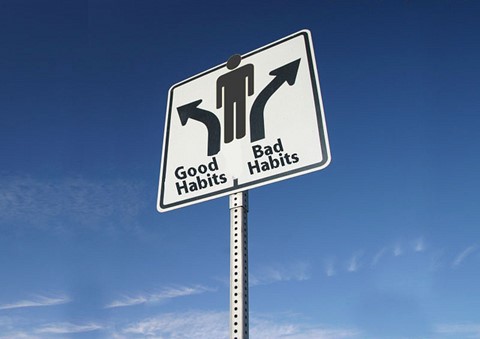Habits…
I was pondering being obsessive about certain habits recently and whether or not they were really doing me any good. I was wondering if I was using those habits as a proxy for actual good in my life and wondering if I was being kind of a dork about being so insistent on following through on them.
Making the Bed
I make my bed every morning. Mostly, this is because my mother had me and my brother make our beds every morning when we were children. I went through a period of not doing it, but to be honest, it takes very little time and makes the room look 80% neater, even if all you do is pull the darn comforter and sheets straight. Which, to be honest, is really about as far as I tend to go with making the bed.
This habit spills over a bit. It means I’m more likely to tidy my room more frequently. I mean, right now, I have some wool sweaters I intend to wash this week on the dresser, as well as some knit socks I hand-washed and have drying on my desk, but other than that, the room is clean. (There are days when I wonder why I have a desk. I am sitting in an overstuffed chair with my feet on an ottoman at the moment. This is my writin’ chair).
But, anyway, making the bed means I’m more likely to put dirty clothes in the hamper and put away clean ones more quickly. So, is this a habit that is good for me? Why yes!
10,000 Steps
This is not yet a habit, but I am wanting it to be. This is my baseline activity, even though I do go for a swim a few mornings a week. I figure if I get my steps in, I’m not too sedentary for words, and might even get out for a walk every now and then. Though I freely admit I do pace the house to get those steps in.
The way I figure it, that baseline for steps is good for general activity. The swimming? I do better with some HARD activity every now and then. Also, I’m a middle-aged woman. Osteoporosis is not particularly common in my family. I *think* Mom said a reference to Neandertal man was made when she got a bone scan because she had such good bone density. However, Mom does a lot of pretty physically demanding work maintaining her yard and garden. She’s always lifting wheelbarrows of compost and digging holes and stuff. So, she gets that higher-impact stuff for building bone density. I don’t. Swimming is the most physical hobby I have, and it doesn’t do diddly for bone density. But getting in a decent baseline of walking does. So, that works for me. Besides, getting in 10,000 steps isn’t particularly intrusive.
750 Words
I wobble on this one. To write well, you need to write. However, I do wonder if just sitting down and doing a word-vomit really does a thing for you past a certain point. While someone sedentary who starts taking some slow walks is likely going to see some improvements in fitness markers, those same slow walks don’t do much to improve the fitness of an athlete. Regarding writing, I’m not exactly a beginner. These 750 Words aren’t really focused practice.
Except?
After I have been doing these exercises for awhile, they do stop being a word vomit and do start to become actual essays with topics, structured arguments, and real conclusions. I start thinking about real things to talk about and try to structure them in a coherent way.
Never mind that what I really need to do is practice fiction. Most especially, I need to practice plotting a story with a real beginning, working to a climax and settling on a denouement. Maybe once a week my 750 Word session should be an attempt as a short-short story to learn this. I feel like I’m not as good at it as I could be. Worldbuilding? I do that pretty well. Characterization? I’m decent at it, though I could be better. Dialog? I dunno. I write like I think they talk, but I know you can fool yourself about this. Criticism of George Lucas’ dialog in Star Wars is a perfect example.
So, while maybe these daily practices seem kind of retentive and obsessive on the surface, I look at what they give me and realize that, yes, while they do take a certain amount of time out of my day, what they give back is worth it.




